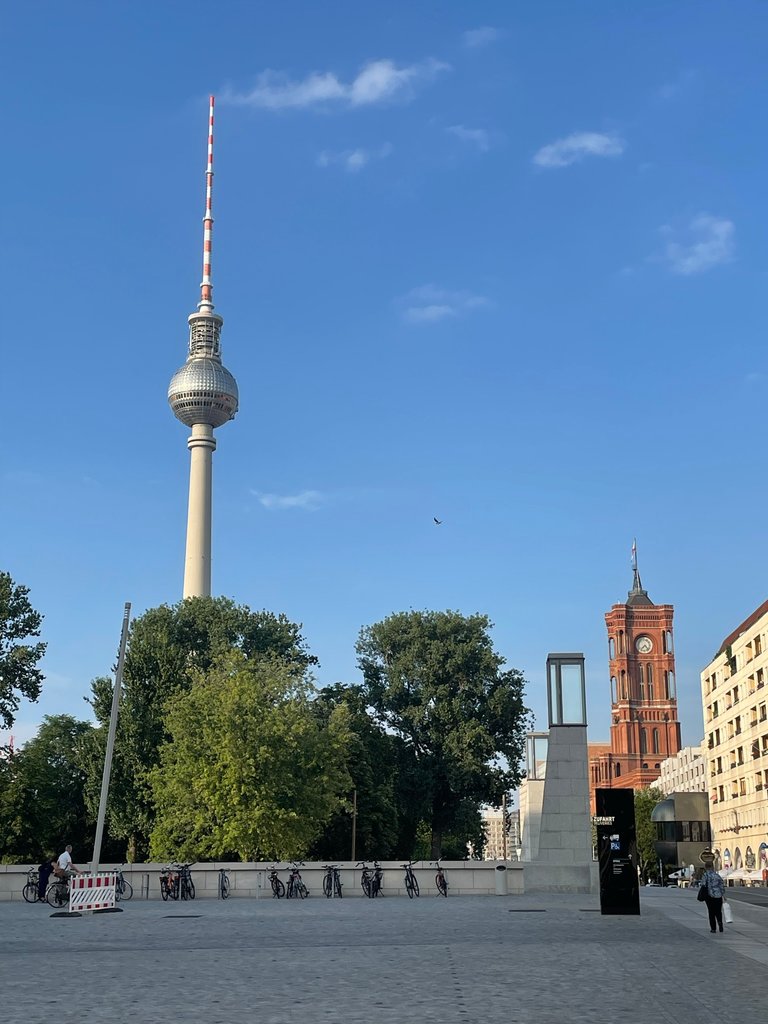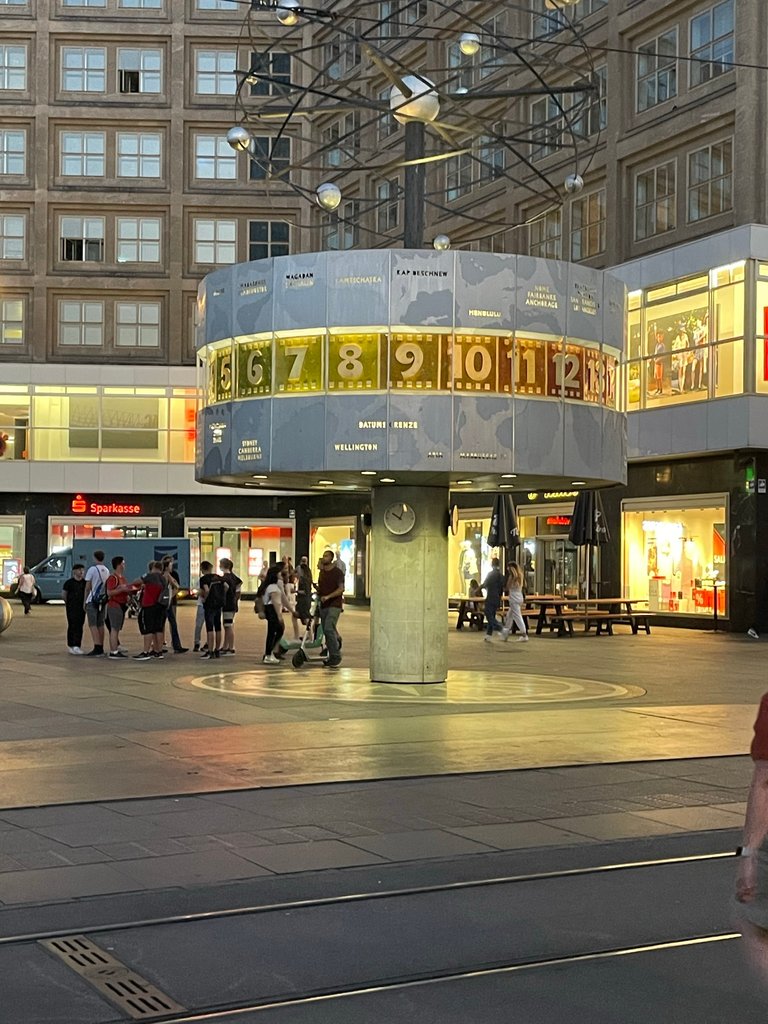The Mosaics of Berlin’s Victory Column – Part 4

The fourth segment of Anton von Werner’s mosaics depicts the victory parade after the Franco-Prussian War of 1870/71 – one of the most pivotal moments leading to the foundation of the German Empire.
At the center, two horsemen dominate the scene: one in a richly decorated uniform riding a chestnut horse, the other draped in a blue cloak atop a black horse. These figures represent the commanders and military leaders whose authority and triumph shaped the outcome of the war. Around them, officers and soldiers raise banners and flags in celebration of the newly won victory.
Unlike the allegorical imagery of earlier mosaics, this panel is firmly rooted in historical reality. The riders advance in solemn composure, embodying dignity and power rather than ecstatic exaltation. This is a scene of political symbolism – the visual manifestation of the new Empire’s authority.
At the bottom, half-hidden in leaves and shadows, lies a fallen figure wearing a red cap – a reminder of the human cost of war. While the upper part of the mosaic is bathed in shimmering golden tesserae, glorifying the victors, the subdued tones below hint at the darker realities beneath the triumph.
Through this imagery, the Victory Column becomes more than a memorial – it is a political statement in stone and glass, affirming the German Empire’s rise to power among the nations of Europe.
Artistically, von Werner retains his hallmarks of dramatic poses and vivid coloration, but here we sense a more austere and sober tone, emphasizing the war not merely as a military achievement but as a state-defining moment.
Ciao Kakao, your Morticia

Die Mosaike der Siegessäule in Berlin – Teil 4
Das vierte Segment des monumentalen Mosaikzyklus von Anton von Werner zeigt die Siegesparade nach dem Deutsch-Französischen Krieg von 1870/71. Hier begegnen wir einer Szene, die stark im historischen Ereignis verwurzelt ist und die Macht und Würde des neuen Kaiserreichs demonstrieren sollte.
Im Mittelpunkt stehen zwei Reiter: einer in prächtiger Uniform auf einem braunen Pferd, der andere mit blauem Mantel auf einem schwarzen Pferd. Diese Gestalten repräsentieren die führenden Militärs, die den deutschen Sieg verkörpern. Sie sind von Offizieren und Soldaten umgeben, die Fahnen schwenken und den Triumphzug begleiten.
Bemerkenswert ist, wie das Mosaik die Stimmung einfängt: keine heroische Überhöhung wie in den allegorischen Szenen zuvor, sondern die Inszenierung einer politischen Realität. Es ist ein Bild von Macht und Ordnung – die Reiter schreiten in Ruhe voran, umgeben von Zeichen des militärischen Erfolges.
Im unteren Teil erkennt man einen gefallenen Gegner im roten Barett, halb verdeckt von Blättern – ein subtiler Hinweis auf das Leid, das diesem Triumph zugrunde liegt. Während oben die Sieger in goldenen Mosaiksteinen verklärt erscheinen, bleibt unten die Realität des Krieges sichtbar.
Dieses Segment macht deutlich, dass die Siegessäule nicht nur ein Monument der Erinnerung, sondern auch ein politisches Manifest war. Sie stellte den Anspruch des jungen Deutschen Kaiserreichs dar, seinen Platz unter den europäischen Mächten einzunehmen.
Künstlerisch bleibt von Werner seinem Stil treu: klare Symbolik, dramatische Figuren, reiche Farbigkeit. Doch hier spürt man zugleich eine gewisse Nüchternheit und Strenge, die die Bedeutung des Krieges als Staatsakt unterstreicht.
Ciao Kakao, Eure Morticia
 |  |  |
| Get 100 Ecency Points for a reshare! | Ciao Kakao | Get 100 Ecency Points for a reshare! |

That small red capped figure tucked in the leaves hit me hardest, it turns the whole parade into a ledger where triumph sits in gold above and the cost hides below. My inner number cruncher smiled at that balance then winced at the write off of lives :). Von Werner's shift to sober, grounded power reads like a state audit rather than theater, very ReaListic.. and kind of chilling. The shine is loud but the footnote bleeds' through.
What a powerful observation — I love how you framed it as a “ledger” between triumph and cost. That small red-capped figure really is the quiet counterweight to all the grandeur above, almost like history itself whispering its price beneath the golden celebration.
Von Werner’s balance between splendor and gravity becomes even clearer once you notice those subtle human details — they anchor the scene in reality and remind us that victory is never just light and color, but also shadow and loss.
Your take on it as a kind of “state audit” feels spot on — this panel in particular strips away the mythic tone and replaces it with something more sober, almost bureaucratic in its honesty. The parade may shine, but as you said, the footnote bleeds through.
Your state audit image really fits, gold reads like credit on top while that red cap sits as the debit that refuses to be written off. Werner's realism tallies glory against cost with a cold accountant calm, so the shine feel loud but the footnote bleed's through :) It turns monument into memo, authority into a closing entry that won't quite close, a chilling banlance.